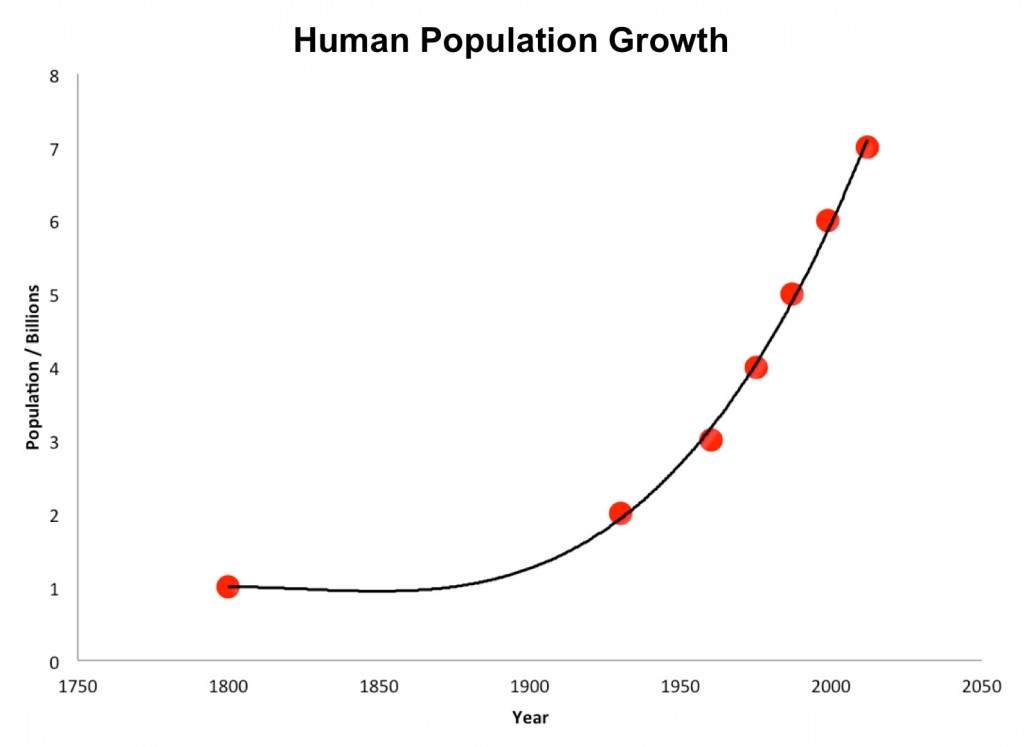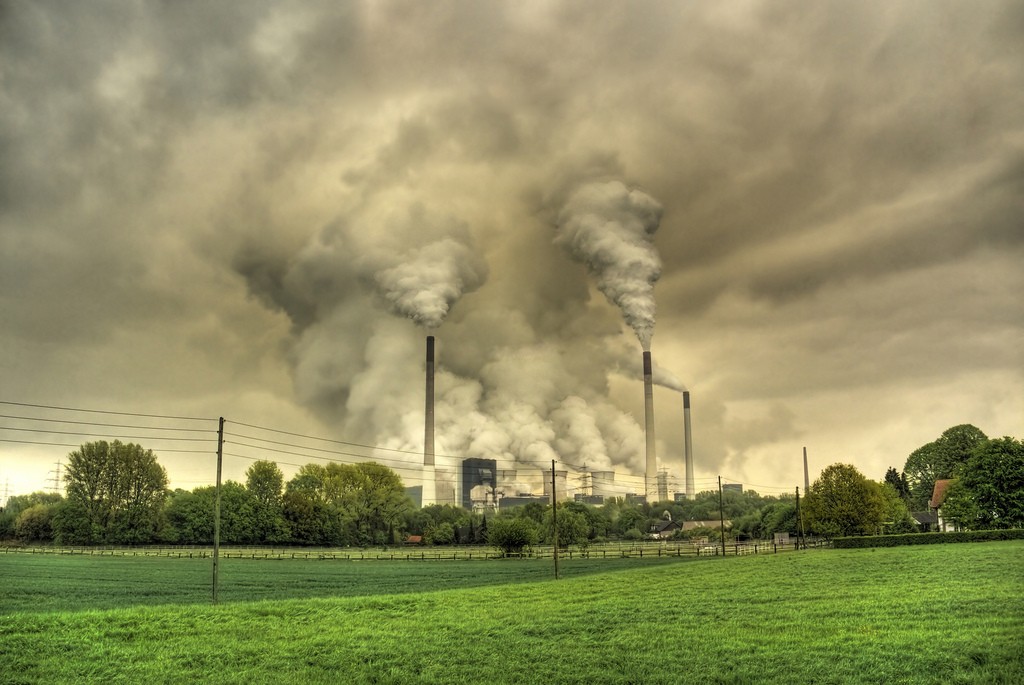World population growth is accelerating. True, the rate has halved since the historical peak of 2.2% in the 1960s, but estimates show that by 2050, population numbers will be close to 9 billion – almost 3 billion more than current rates. Increased growth has led to the concept of the mega city; huge and densely populated urban areas, high in CO2 emissions levels because of the vast concentration of people. There are now more than 25 mega cities in the world, each harbouring in excess of 10m people. Compare this to the early 1800s, in which just 3% of the world’s population inhabited cities, and it is easy to see why population growth has become an important area of study; it is rapid and consuming, and concepts like the mega city show just how the way in which we live enters new paradigms according to population levels – now the number of people who live cities is closer to 50%.

Technically speaking, population growth does not have to affect these problems at all; there is no inherent link between pollution and increased population, nor is there a link between CO2 emissions and population growth. Certainly, there is the simple fact that more people means more CO2 being released into the atmosphere through the conversion of oxygen, but this carbon can be encompassed within the existing carbon cycle, meaning that – according to definition – it is not contributing per say to global warming. With that in mind, it is perfectly possibly to argue that, though the link exists, there is no need for population growth to affect CO2 emissions, climate change, or global warming.
What makes growing population a problem for climate change is human habit, and we’re not just talking about biting nails or the use of online casino websites here. In the age of industry, in the paradigm of consumption and mass production, carbon emission has become a necessity; the burning of fossil fuels as a cheap and efficient energy source has dominated human production since the industrial revolution, and has reigned for 200 years. Under such a system, population growth is dangerous for world climate change and CO2 emissions levels, because the system dictates that production must rise with population, so that carbon levels, too, must necessarily rise. Indeed this is evident in the breakdown of rising CO2 emissions rates, in which up to 25% can be attributed to transport modes. That percentage will rise under the current system as populations rise.
Population growth, then, is not detrimental to the environment by default, but has a serious effect because of the system of mass production and carbon based energy. To curb that problem, we need a new paradigm and a new system, in which either mass production is halted, or carbon based energy is made obsolete. With the first of those options looking at this time an effectual impossibility, we must enter a new paradigm under the protocol of the second option; the switch from carbon based energy, to renewable energy. That way, the rapid growth of populations across the world need not add to the ever more serious problems of global warming, CO2 emissions, and climate change.
In every one of the open deliberations on the impacts and ramifications of a worldwide temperature alteration, environmental change and CO2 emissions, one thing can certainly be concurred; things are changing. There could conceivably be motivation to dishonour the thought that environmental change is a man-made marvel, and there might possibly with measures being taken to help the environment such as electric cars and the use of ozone generators as air purifiers. However this author would definitely contend that such claims are false – be motivated to question the unfavourable impact of such ideas. Be that as it may, there can be no debate on the way that CO2 discharge levels are rising; the Energy Information Administration demonstrates that CO2 emissions from the burning of fossil energies has risen consistently for a long time.

With that ascent, essentially, comes a worldwide temperature alteration, and the shift in the world’s environment and biological communities that we by and large term environmental change. A few cynics contend that the ascent is either characteristic – a consequence of the immense climatic pendulum – and others contend that it is inescapable; it is truly asserted, for instance, that the unfaltering ascent in world populace levels are the boss donor to development in CO2 emissions around the world. The contention goes that – shy of authority conception prevention approaches – it would be verging on difficult to check the ascent in populace, and CO2 emissions are the inevitable result.
That view should be tested. Certainly, there is some truth in the case; populace rises mean more individuals, and that makes a more noteworthy demand for fossil energizes, the wellspring of most things that can sustain, clothe, and house us. In any case, that summation infers a fundamental reliance on fossil fills. It is consistent with say that the present day world depends on fossil powers, so that the connection is a solid one, however it is not a bound relationship; much should be possible, regardless of the fact that an aggregate independence from fossil powers is a current common sense inconceivable possibility, to enormously diminish the world reliance on fossil fills.

